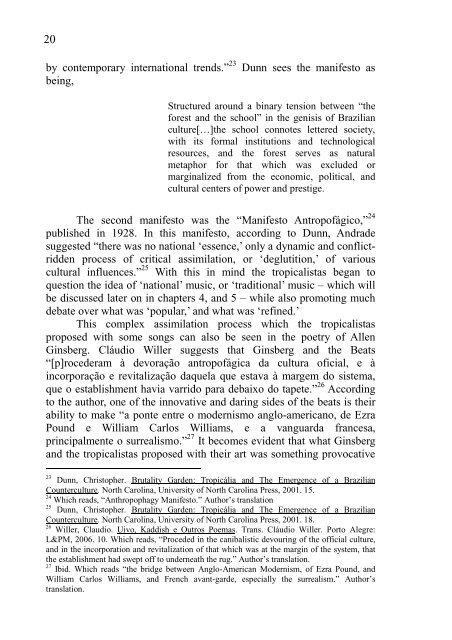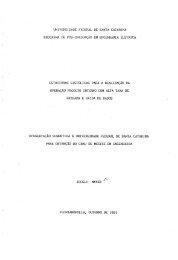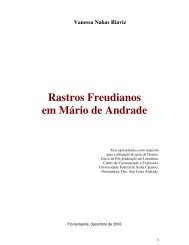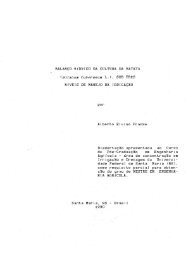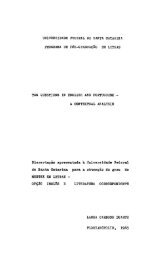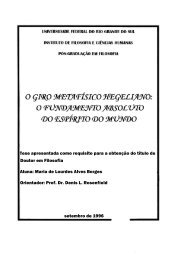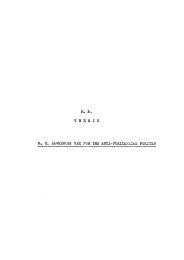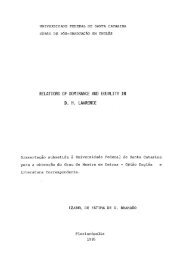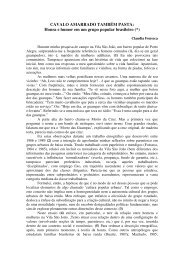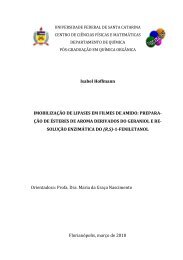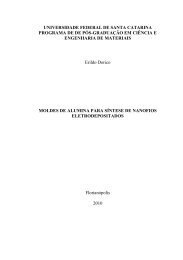Tropical ginsberg
Tropical ginsberg
Tropical ginsberg
Create successful ePaper yourself
Turn your PDF publications into a flip-book with our unique Google optimized e-Paper software.
20<br />
by contemporary international trends.” 23 Dunn sees the manifesto as<br />
being,<br />
Structured around a binary tension between “the<br />
forest and the school” in the genisis of Brazilian<br />
culture[…]the school connotes lettered society,<br />
with its formal institutions and technological<br />
resources, and the forest serves as natural<br />
metaphor for that which was excluded or<br />
marginalized from the economic, political, and<br />
cultural centers of power and prestige.<br />
The second manifesto was the “Manifesto Antropofágico,” 24<br />
published in 1928. In this manifesto, according to Dunn, Andrade<br />
suggested “there was no national ‘essence,’ only a dynamic and conflictridden<br />
process of critical assimilation, or ‘deglutition,’ of various<br />
cultural influences.” 25 With this in mind the tropicalistas began to<br />
question the idea of ‘national’ music, or ‘traditional’ music – which will<br />
be discussed later on in chapters 4, and 5 – while also promoting much<br />
debate over what was ‘popular,’ and what was ‘refined.’<br />
This complex assimilation process which the tropicalistas<br />
proposed with some songs can also be seen in the poetry of Allen<br />
Ginsberg. Cláudio Willer suggests that Ginsberg and the Beats<br />
“[p]rocederam à devoração antropofágica da cultura oficial, e à<br />
incorporação e revitalização daquela que estava à margem do sistema,<br />
que o establishment havia varrido para debaixo do tapete.” 26 According<br />
to the author, one of the innovative and daring sides of the beats is their<br />
ability to make “a ponte entre o modernismo anglo-americano, de Ezra<br />
Pound e William Carlos Williams, e a vanguarda francesa,<br />
principalmente o surrealismo.” 27 It becomes evident that what Ginsberg<br />
and the tropicalistas proposed with their art was something provocative<br />
23 Dunn, Christopher. Brutality Garden: Tropicália and The Emergence of a Brazilian<br />
Counterculture. North Carolina, University of North Carolina Press, 2001. 15.<br />
24 Which reads, “Anthropophagy Manifesto.” Author’s translation<br />
25 Dunn, Christopher. Brutality Garden: Tropicália and The Emergence of a Brazilian<br />
Counterculture. North Carolina, University of North Carolina Press, 2001. 18.<br />
26 Willer, Claudio. Uivo, Kaddish e Outros Poemas. Trans. Cláudio Willer. Porto Alegre:<br />
L&PM, 2006. 10. Which reads, “Proceded in the canibalistic devouring of the official culture,<br />
and in the incorporation and revitalization of that which was at the margin of the system, that<br />
the establishment had swept off to underneath the rug.” Author’s translation.<br />
27 Ibid. Which reads “the bridge between Anglo-American Modernism, of Ezra Pound, and<br />
William Carlos Williams, and French avant-garde, especially the surrealism.” Author’s<br />
translation.


